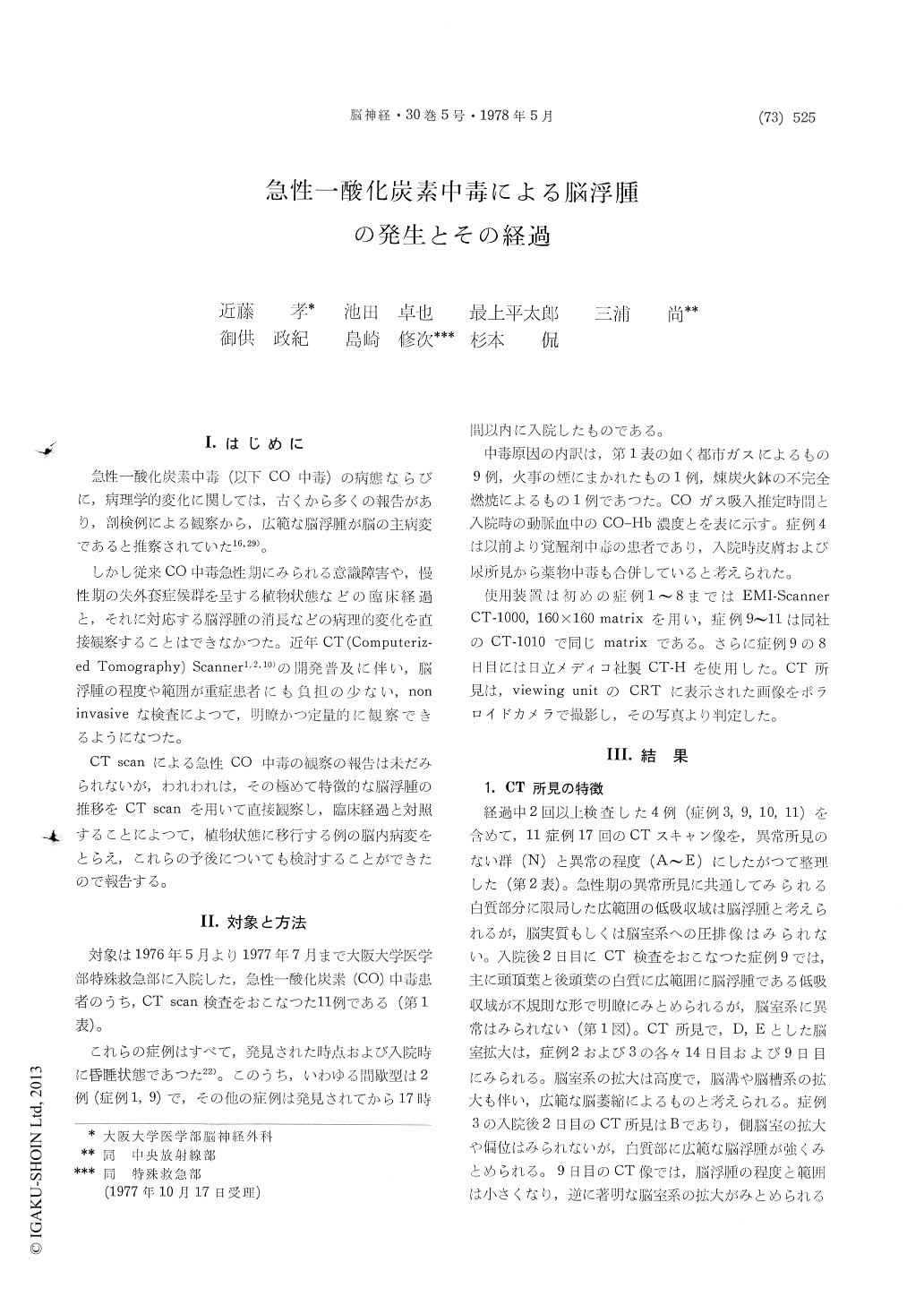Japanese
English
- 有料閲覧
- Abstract 文献概要
- 1ページ目 Look Inside
I.はじめに
急性一酸化炭素中毒(以下CO中毒)の病態ならびに,病理学的変化に関しては,古くから多くの報告があり,剖検例による観察から,広範な脳浮腫が脳の主病変であると推察されていた16,29)。
しかし従来CO中毒急性期にみられる意識障害や,慢性期の失外套症候群を呈する植物状態などの臨床経過と,それに対応する脳浮腫の消長などの病理的変化を直接観察することはできなかつた。近年CT (Computeriz—ed Tomography) Scanner1,2,10)の開発普及に伴い,脳浮腫の程度や範囲が重症患者にも負担の少ない,noninvasiveな検査によつて,明瞭かつ定量的に観察できるようになつた。
Eleven cases of acute carbon-monoxide poisoning in various stages were observed with the com-puterized tomography for 17 times and analysed their correlation between intracranial lesion and their clinical courses.
Five of 11 cases revealed characteristic pathologic findings in CT scan, however complete recovery of consciousness was observed in only 4 of 6 cases with normal CT findings.
In early stage of acute carbon-monoxide poisoning, CT scans showed typical diffuse subcortical low absorption with no obvious ventricular dilatation. The entity of this typical finding was supposed to be the so called"vasogenic edema"attributed to increased extracellular fluid caused by increased permeability of vessels due to hypoxic process of the poisoning.
While this diffuse subcortical edema was subsiding gradually in about 2 weeks, progressive brain atrophy was supervening and resulted finally in severe dilatation of the ventricular system.
In spite of two exceptional cases of vegetative state with normal CT scan, severity of brain edema observed in CT scan in early stage seemed sug-gestive of poor prognosis in most of cases.
Pathogenesis of subcortical brain edema and the effect of hyperbaric therapy in the cases of acute carbon monoxide poisoning were also discussed.

Copyright © 1978, Igaku-Shoin Ltd. All rights reserved.


